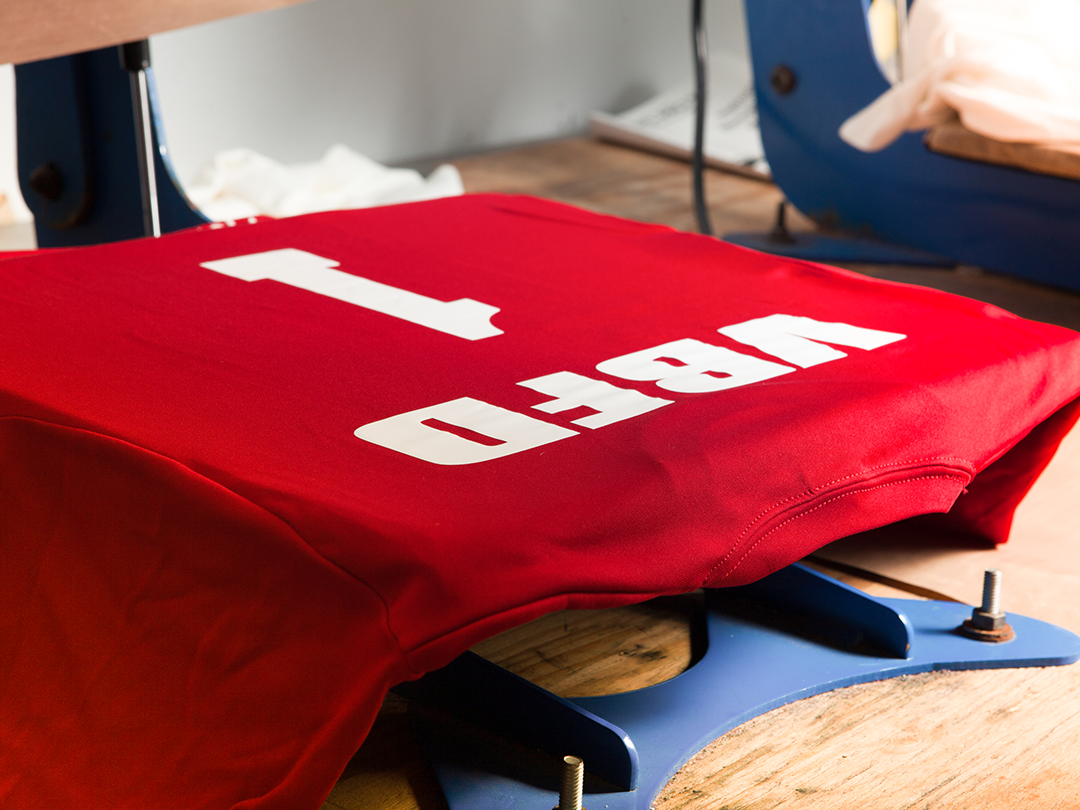
Have you ever wanted to know how the t-shirt you’re wearing was created? How do screen printers use different colors, fonts, and textures? We’re breaking down the complex science that is screen printing. From “burning” an image onto a mesh screen, to pressing ink onto products, the screen printing process is a delicate art.
Determining the design is the basis of this whole project. You can provide us with the exact logo, image, or text you’d like; or, we can work together to take your ideas to the next level! We have our own team of great designers who will be happy to work with you to create the look you’ve envisioned.
After checking off on what will be printed, we begin our meticulous process. The screen plays a huge role in this process, which is why it must be carefully prepped. Screens are typically made of polyester or nylon mesh with a wooden perimeter. To block ink from going into unwanted areas, we apply a layer of emulsion. This substance gives the screen a bright color, like green or pink, and will stop all ink from ruining the end product. Emulsion is very light sensitive, and screens that have been coated with it are normally stored in the dark. The screen is then transferred to the light table, a machine that exposes the screen to light. We take the design that you check off on, print it out on a translucent film positive, and tape it onto the screen. This is then placed inside the light table and light penetrates through the mesh. The design’s ink on the film positive blocks that light, and when the screen’s emulsion is rinsed in a wash out booth, the design—called a stencil— will remain. The emulsion that surrounded the stencil cured, so it does not wash away. However, the emulsion beneath the stencil was left uncured, so it washes away. Think of this like falling asleep in the sun with your sunglasses on—you’ll have tan lines in the shape of those glasses around your face. This works in a loosely similar way.
Now, ink can freely flow through the stencil design. Before we can get to that step, we must make sure the screen and product are perfectly lined up on the screen printing press. This is called registering, and printers typically perform several test prints to make sure the design and its colors are seamless. Once registered, we check variables like print order and speed, and squeegee angle and pressure. The squeegee, or blade, is what pulls the ink across the screen. Once the ink has been properly stroked onto the product, it is then placed in a large dryer. The ink must cure in order to stay on the product. If it’s under-cured, the ink can flake off or wash away.
Once dry, the product is good to go! The screen printing process seems like it could be simple, but a lot of detail and time goes into your printed apparel. At MSP, we can produce up to 2,000 t-shirts an hour! Our capabilities are wide open—from golf bags to vinyl signs, we can screen print on many different products. Please contact us for more information.




